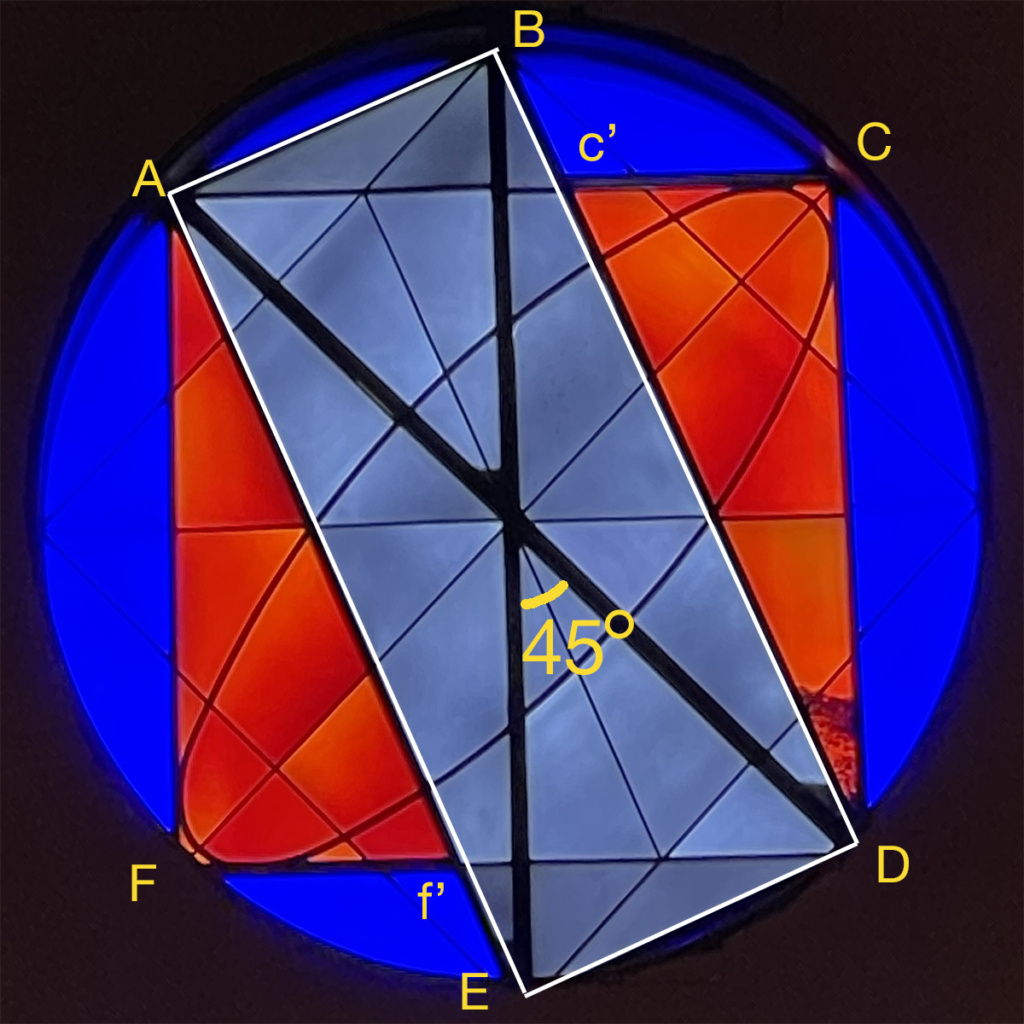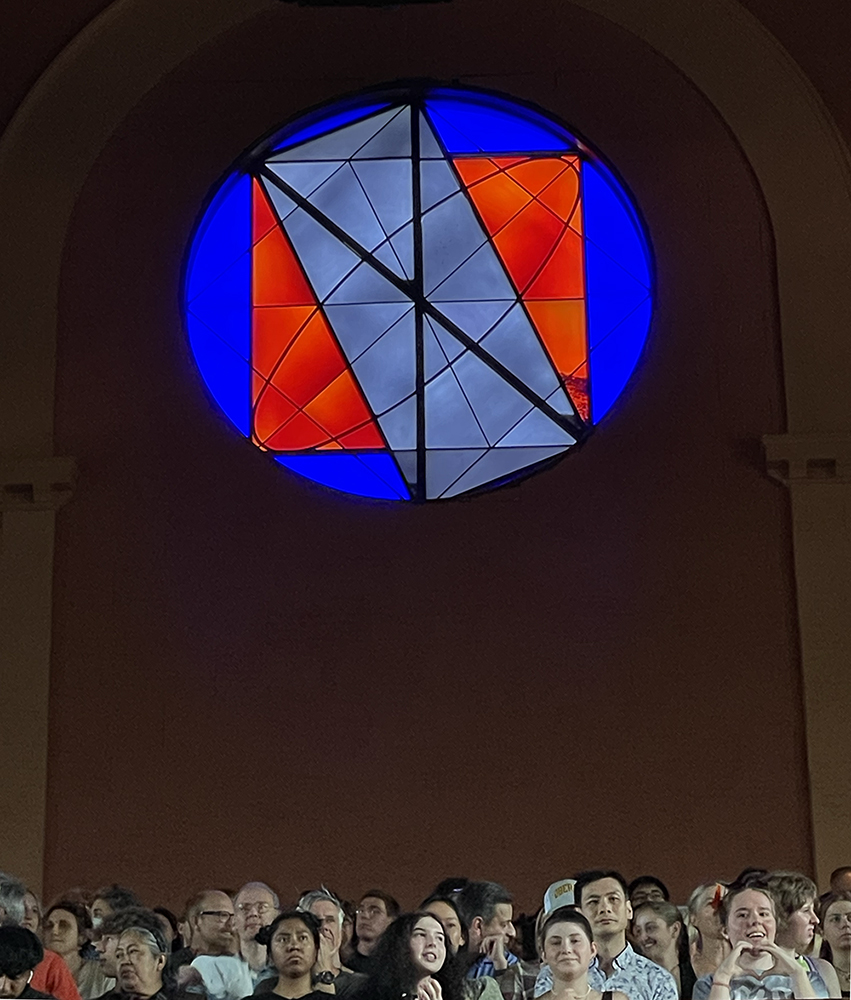When I first visited Finney Chapel at Oberlin College in Ohio, I was struck by the round window; it lacked the mirror symmetry typical of rose windows in Romanesque style buildings, of which Finney is one, and looked more like a geometry problem. Until I read more about its history, I thought it might be a collaboration between the math and art department of the college.
A fairly recent addition to Finney Chapel, the rose window was designed by artist Robert Mangold. It turns out that Mangold has been playing around with geometry for quite some time. His work has been found to have a kinship to classical works melding art and geometry, such as the famous Vitruvian Man, for example. A brief glance at the collection of his works at the Allen Memorial Art Museum at Oberlin College reveals an abundance of forms commonly found in geometry textbooks. There are semicircles, right triangles, trapezoids, curves tangent to polygons, most of which make me wonder about areas, angles, and proportions. The originally submitted sketch of the Finney Window as well as the final study crisply delineate the many polygons and show the true proportions of the design. The photograph of the window as seen in the main image of this blog post was taken from the ground floor, so the window does not look exactly round due to perspective.
I used software to transform the image of the window above in an attempt to restore its original circular form. A few overlay sketches indicate ideas for geometry questions.

Here is a list of ideas/questions that come to my mind when I look at this image. Everything below is based on the assumption that ACDF is a square, so that segments BE and AD intersect at an angle of 45o.
- What are the angles of triangles AFf’ and DCc’?
- What is the ratio of sides of rectangle ABDE?
- What is the ratio of the lengths of arc
 and arc
and arc  ?
? - What is the ratio of side lengths of triangles AFf’ and triangle AED?
You can write your own questions in the comments.
Perhaps my initial guess that this window was a collaboration between the math and art departments had a grain of truth in it— it is a product of the back and forth between math and art that has been going on for millenia.
